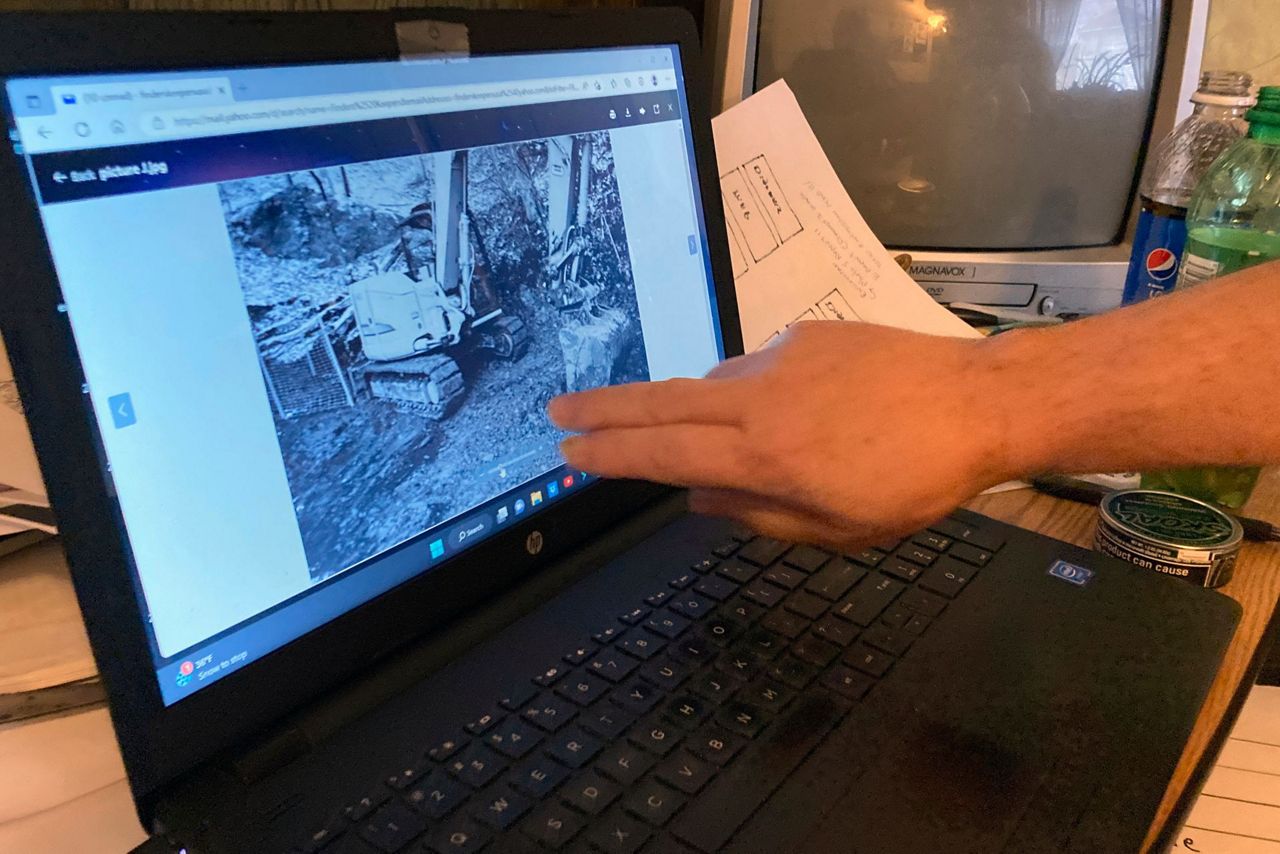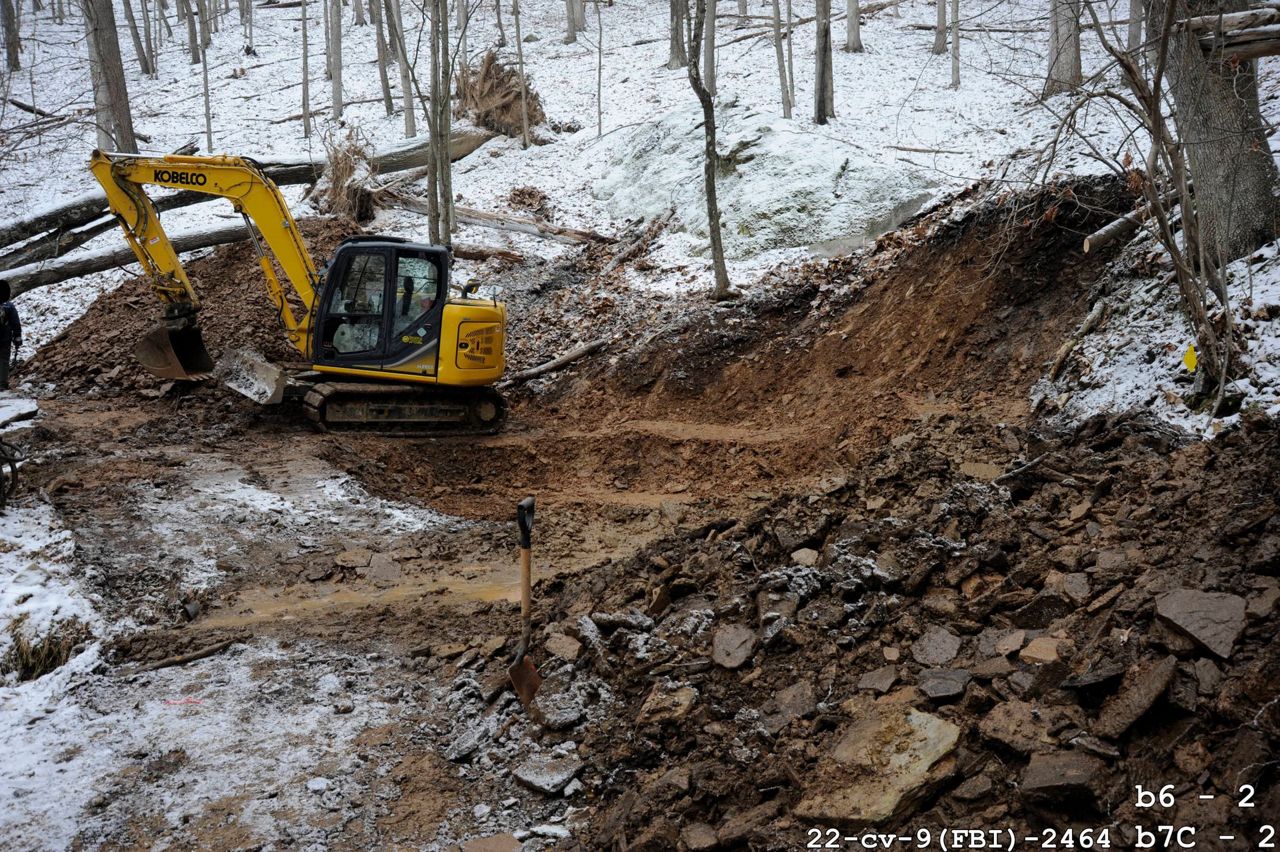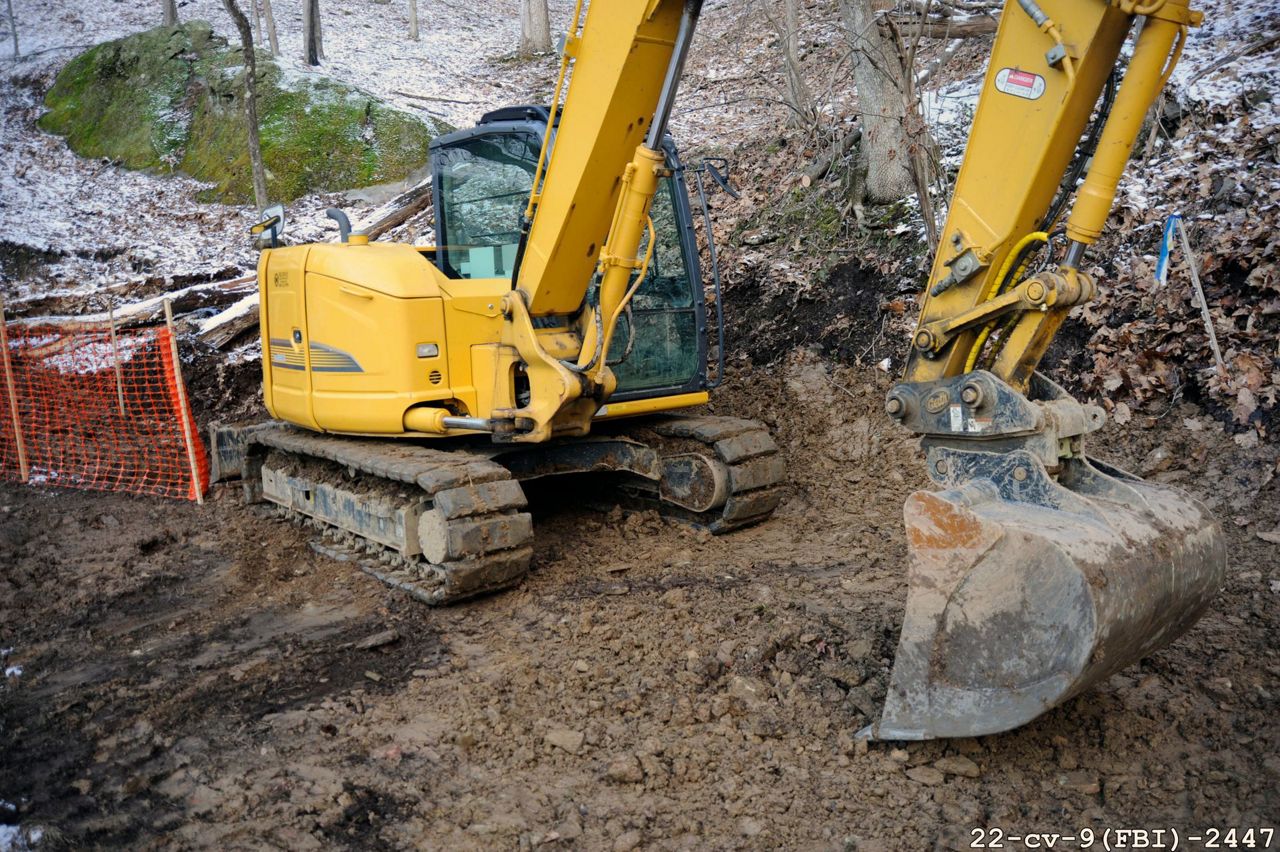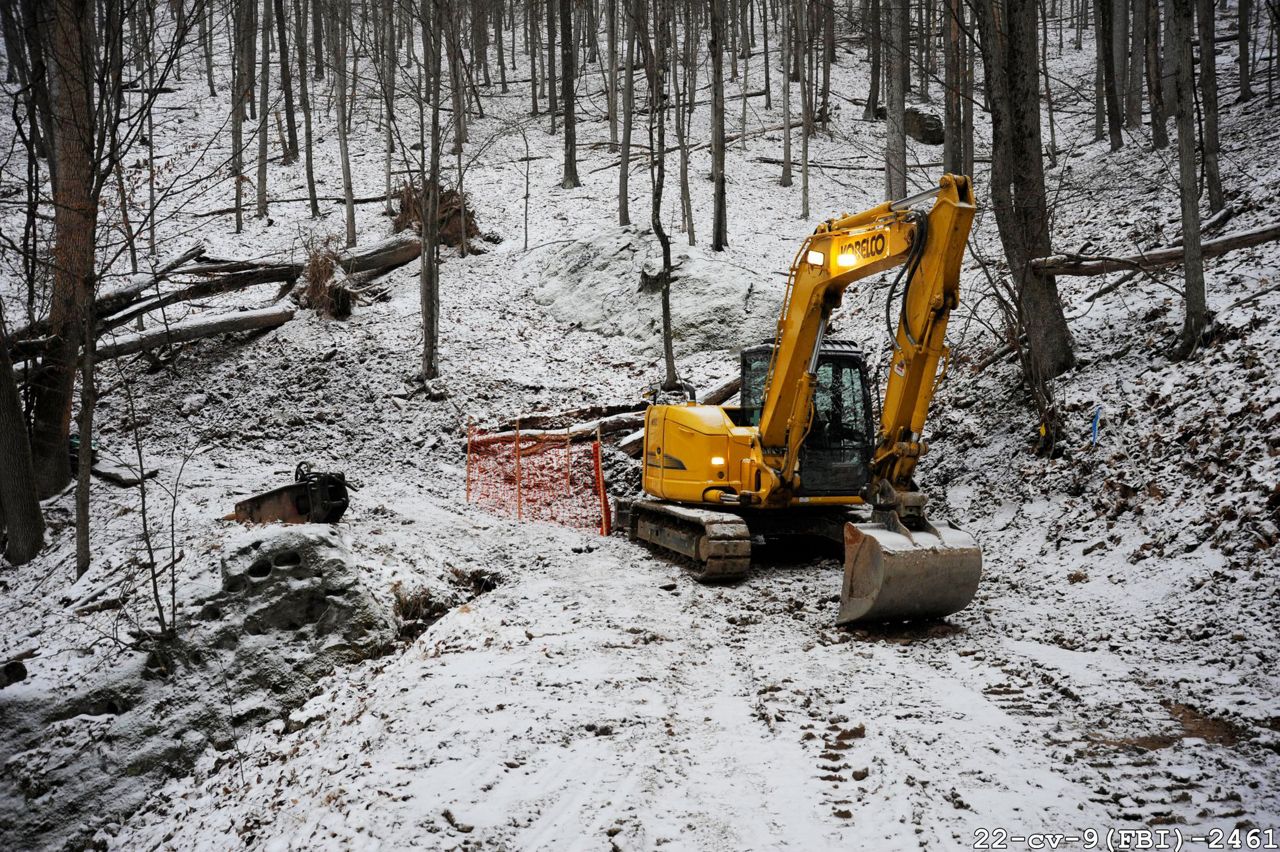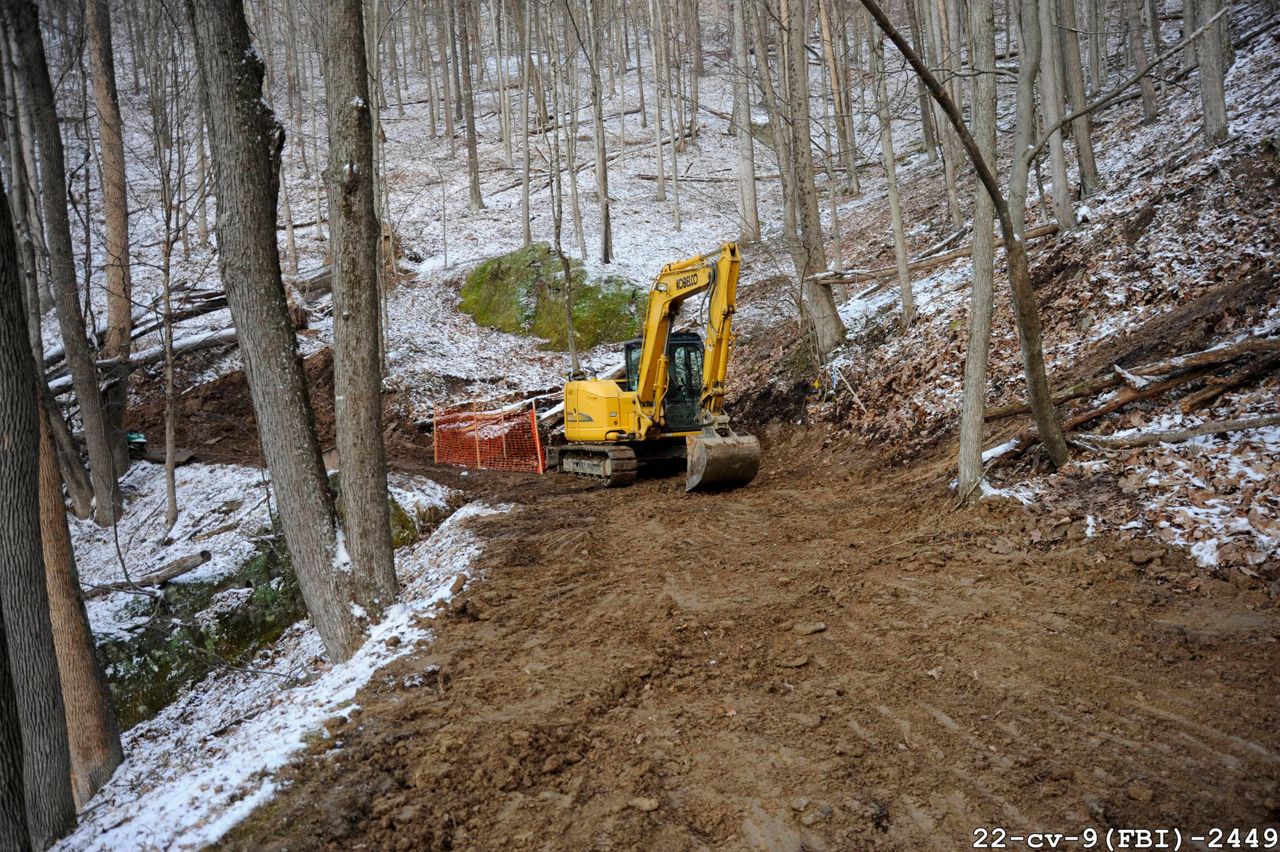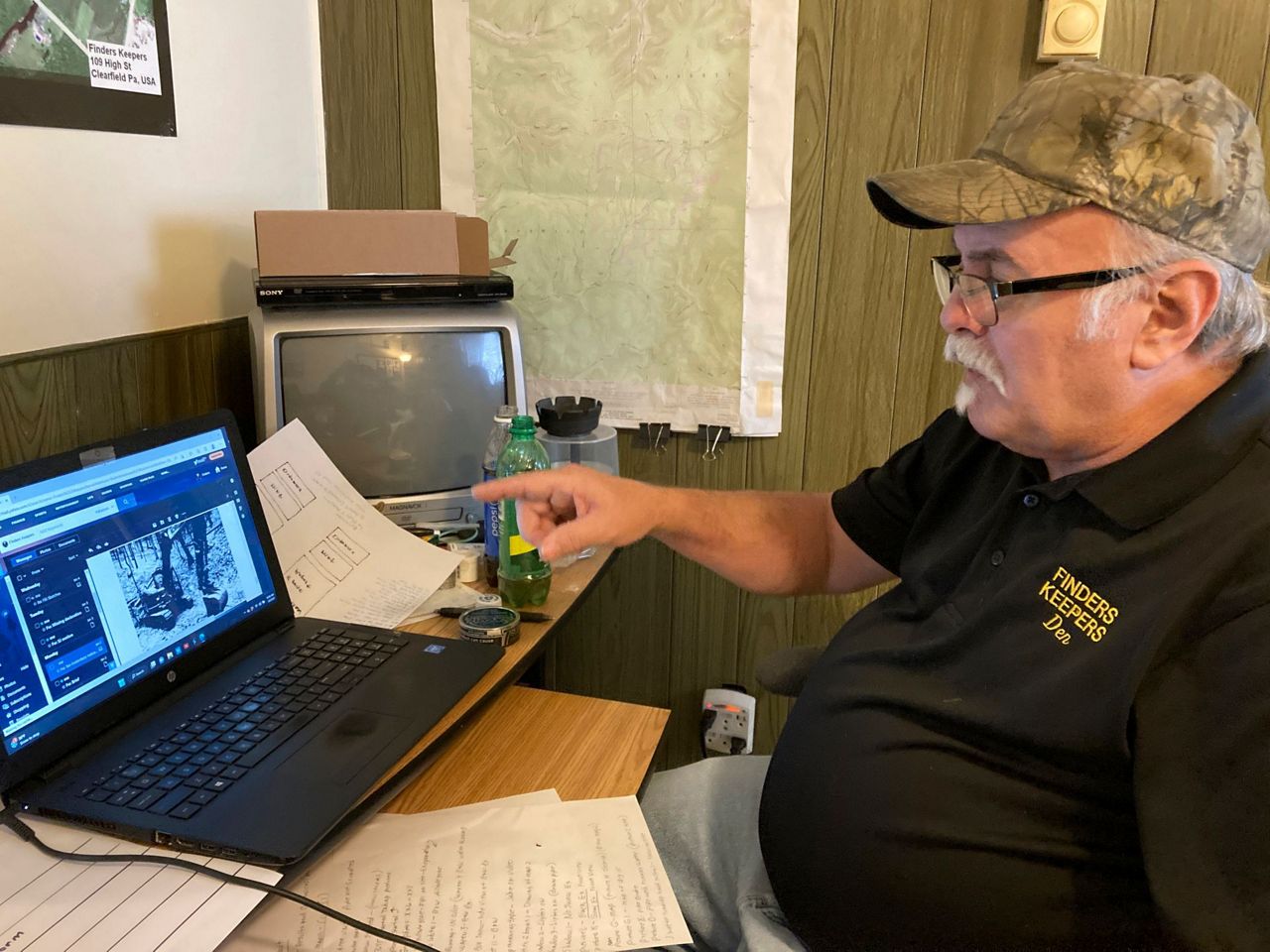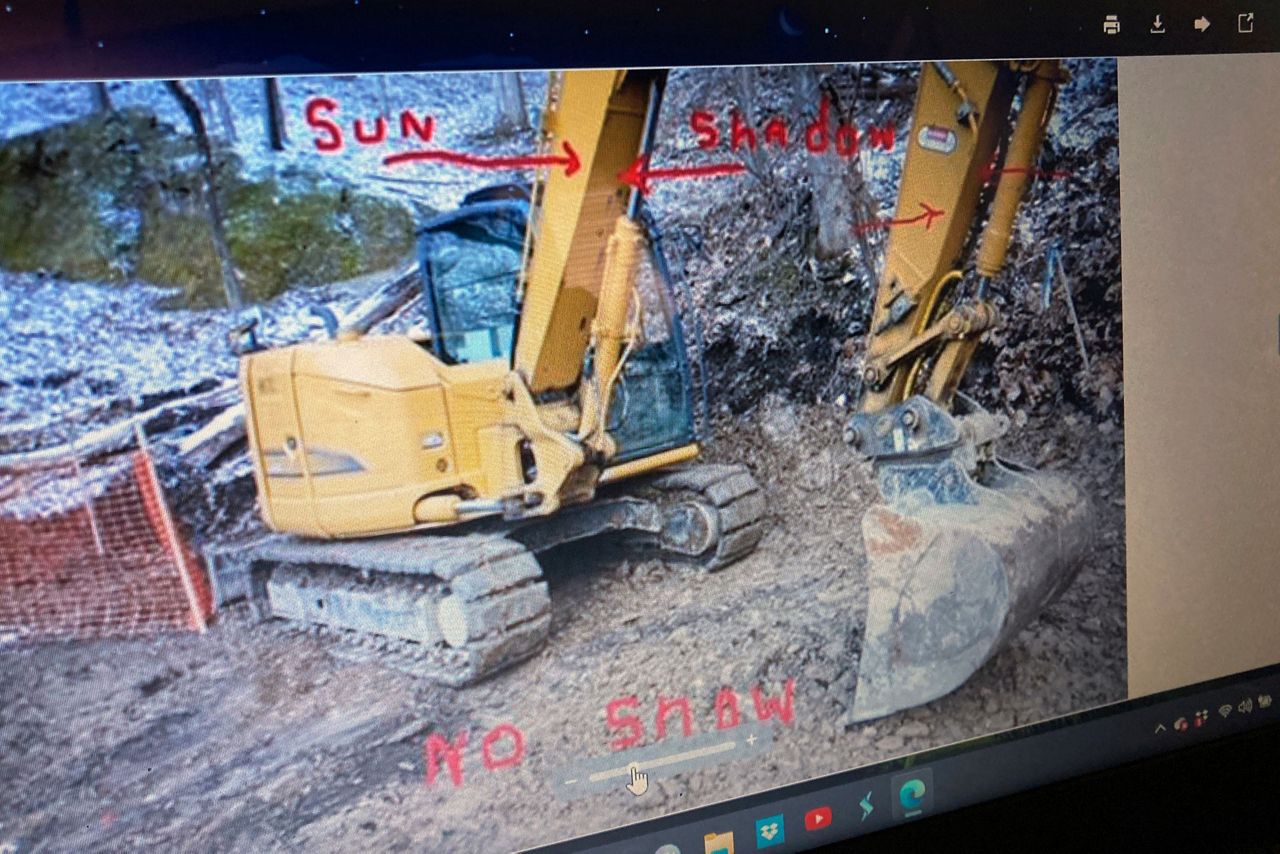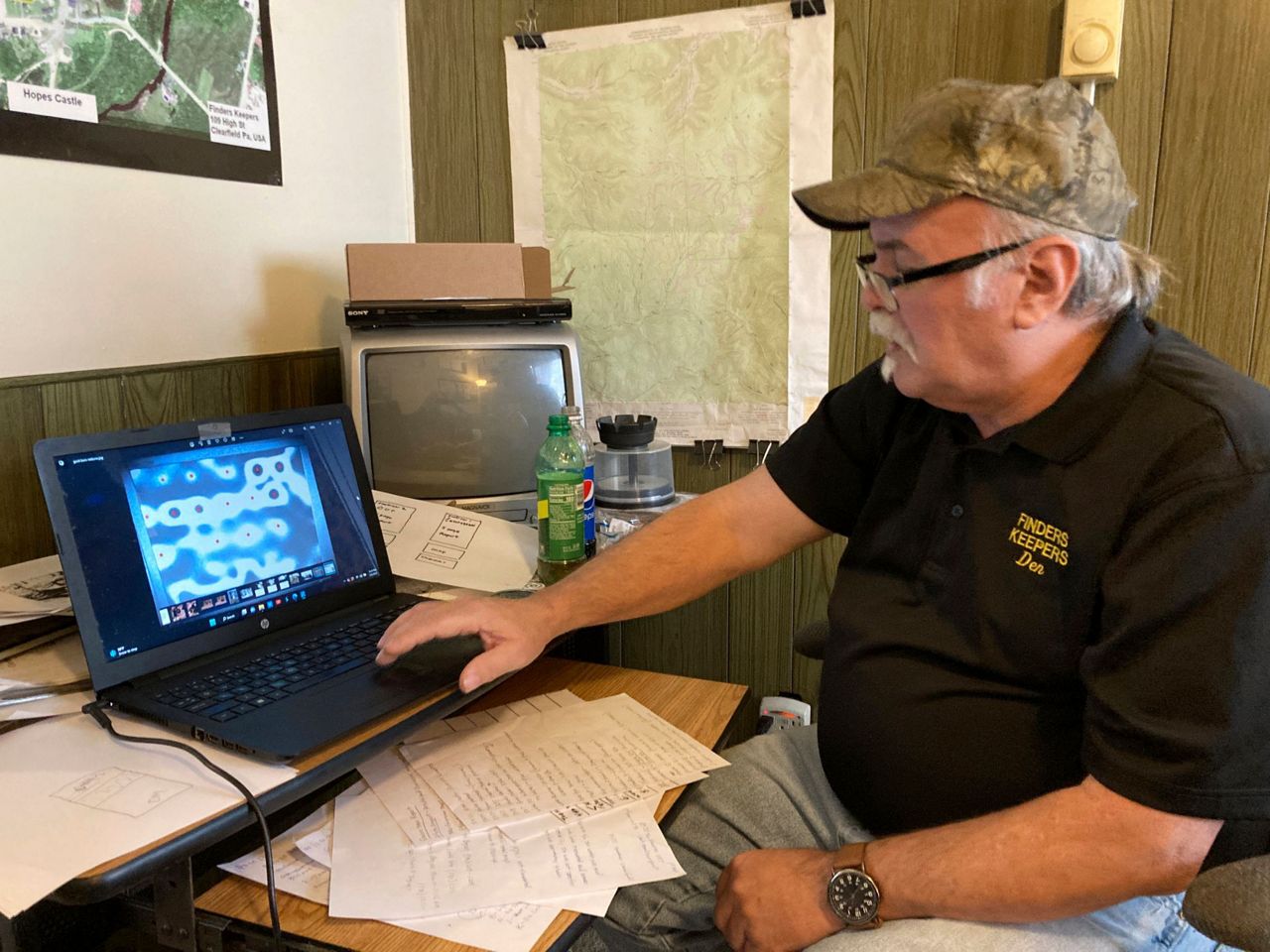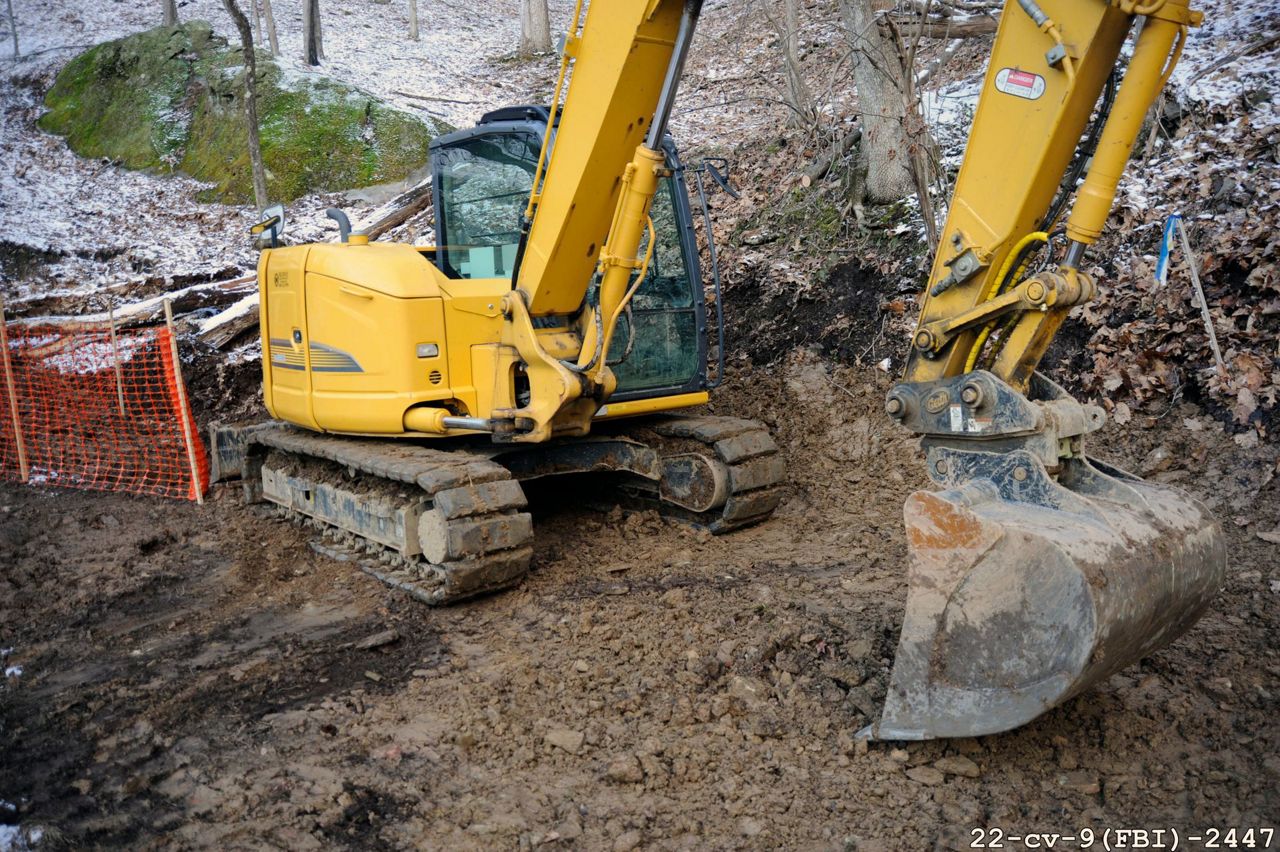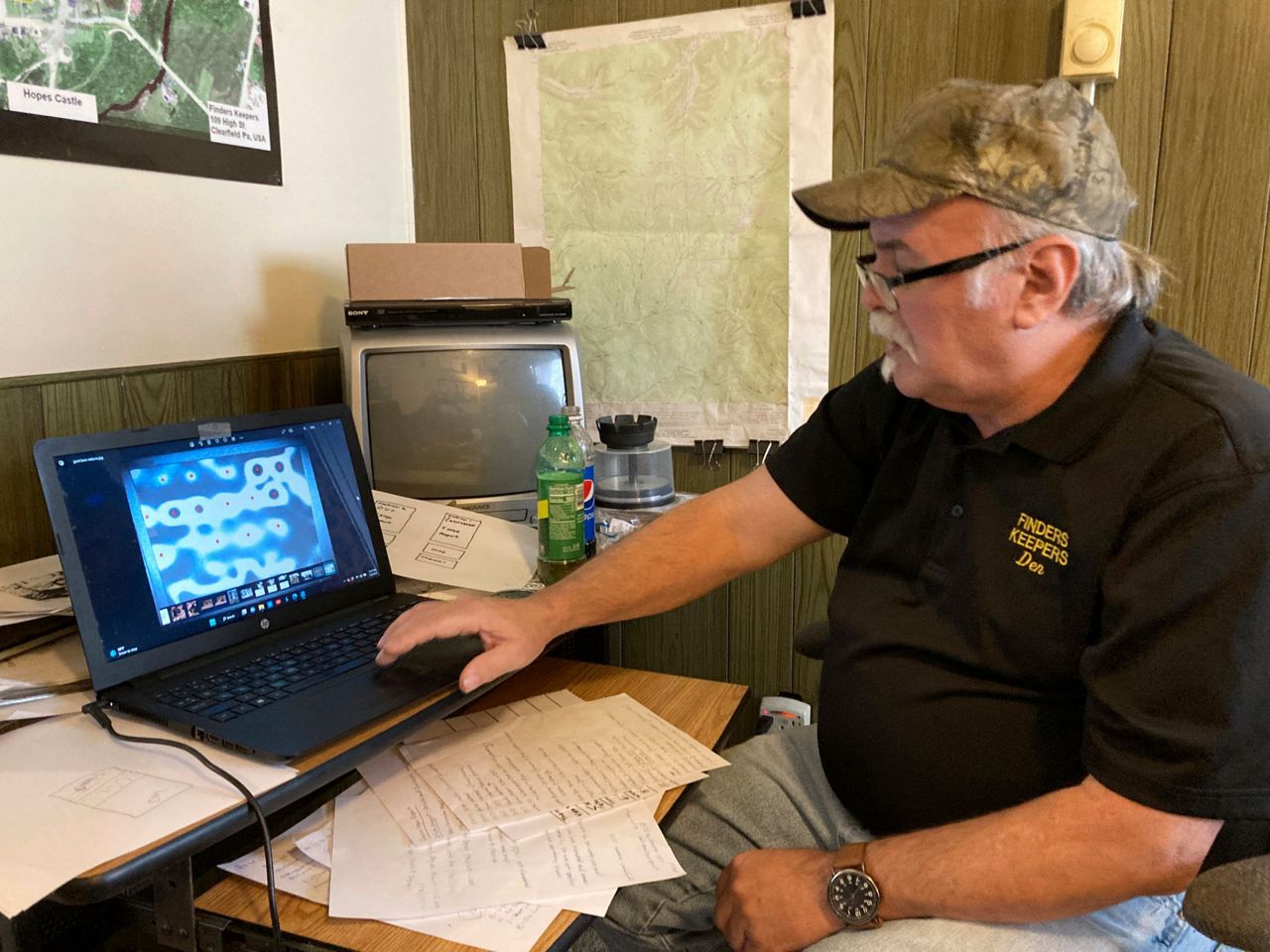CLEARFIELD, Pa. (AP) — The court-ordered release of a trove of government photos, videos, maps and other documents involving the FBI's secretive search for Civil War-era gold has a treasure hunter more convinced than ever of a coverup — and just as determined to prove it.
Dennis Parada waged a legal battle to force the FBI to turn over records of its excavation in Dents Run, Pennsylvania, where local lore says an 1863 shipment of Union gold disappeared on its way to the U.S. Mint in Philadelphia. The FBI, which went to Dents Run after sophisticated testing suggested tons of gold might be buried there, has long insisted the dig came up empty.
Parada and his advisers, who have spent countless hours poring over the newly released government records, believe otherwise. They accuse the FBI of distorting key evidence and improperly withholding records in an apparent effort to conceal the recovery of a historic, extremely valuable gold cache. The FBI defends its handling of the materials.
Parada's dispute with the FBI is playing out in federal court, where a judge overseeing the case must decide whether the FBI will have to release its operational plan for the gold dig and other records it wants to keep secret. The judge could also order the FBI to keep looking for additional materials to turn over to the treasure hunter.
“We feel we were double-crossed and lied to,” Parada said in an interview at his cramped, wood-paneled office, where huge drill bits and high-end metal detectors compete for space with rusty miners' picks, Civil War-era cannon parts and other odds and ends he's dug up over the years.
“The truth will come out,” said Parada, co-founder of the treasure-hunting outfit Finders Keepers. Solving the mystery is not his only goal — he had hoped to earn a finder’s fee from the potential recovery of hundreds of millions of dollars worth of gold.
An FBI spokesperson declined to answer questions about the agency’s gold dig records or respond to the coverup allegations, citing the ongoing litigation. Last year, the FBI released a statement publicly acknowledging for the first time that it had been looking for gold in Dents Run. The statement said the FBI did not find any, adding the agency “continues to unequivocally reject any claims or speculation to the contrary.”
There is little evidence in the historical record to suggest that an Army detachment lost a gold shipment in the Pennsylvania wilderness — possibly the result of an ambush by Confederate sympathizers — but the legend has inspired generations of treasure hunters, Parada among them.
He and his son spent years looking for the fabled gold of Dents Run, eventually guiding the FBI to a remote woodland site 135 miles (220 kilometers) northeast of Pittsburgh where they say their instruments identified a large quantity of metal. The FBI brought in a geophysical consulting firm whose sensitive equipment detected a 7- to 9-ton mass suggestive of gold.
Armed with a warrant, a team of FBI agents came in March 2018 to dig up the hillside. An FBI videographer was on hand to document it, at one point interviewing a Philadelphia-based agent on the FBI’s art-crime team who explained why the FBI was in the woods of one of Pennsylvania's most sparsely populated counties.
“We’ve identified through our investigation a site that we believe has U.S. property, which includes a significant sum of base metal which is valuable ... particularly gold, maybe silver,” the agent said on the video, his face blurred by the FBI to protect his privacy.
Calling it a “155-year-old cold case,” he said the FBI had corroborated Parada’s information about the location of the reputed gold through "scientific testing." He stressed the test results did not prove the presence of gold. Only a dig would help law enforcement “get to the bottom of this story once and for all,” the agent said.
Parada obtained the video and other FBI records through a Freedom of Information Act lawsuit, hoping they would help answer lingering questions about what took place at Dents Run five years ago. Parada was mostly kept away from the dig site while the FBI did its work.
He suspects the agency conducted a clandestine, overnight dig between the first and second days of the court-authorized excavation, found the gold, and spirited it away. Residents have previously told of hearing a backhoe and jackhammer overnight — when the dig was supposed to have been paused — and seeing a convoy of FBI vehicles, including large armored trucks. The FBI has denied it conducted an overnight dig.
Parada and a consultant, Warren Getler, have focused on a handful of FBI photos and an accompanying photo log that have them questioning the FBI's official gold dig timeline. At issue is the presence or absence of snow in the images and the timing of a storm that briefly disrupted operations. For example, an FBI image that was supposed to have been taken about an hour after the squall does not show any snow on a large, moss-covered boulder at the dig site. That same boulder is snow-covered in a photo that FBI records indicate was taken the next morning — some 15 hours after the storm.
They accuse the FBI of altering the sequence of events to conceal an overnight excavation.
“We have compelling evidence a night dig took place, and that the FBI went to some large effort to cover up that night dig,” said Getler, co-author of “Rebel Gold,” a book exploring the possibility of buried Civil War-era caches of gold and silver.
There are other seeming anomalies in the records, according to Finders Keepers' legal motion. Among them:
— The FBI initially turned over hundreds of photos, but rendered them in low-resolution, high-contrast black-and-white, making it impossible to tell the time of day they were taken or even, in some cases, what they show. The treasure hunters went back and requested several dozen of the photos in color, which the FBI provided.
— The agency did not provide any video of the second and final day of the dig. Nor did it produce any photos or video showing what the FBI’s own hand-drawn map described as a 30-foot-long, 12-foot-deep trench — which the treasure hunters claim could have only been dug overnight. Government lawyers acknowledged these gaps in the photo and video record but did not elaborate in a court filing last week.
— The consulting firm hired by the FBI to assess the possibility of gold produced a report on its findings, but the version given to the treasure hunters seems to be missing key pages.
— The FBI did not provide any of its agents' travel and expense invoices, which could shed further light on the dig timeline.
The records released so far “cast doubt on the FBI’s claim to have found nothing and raise serious and troubling questions about the FBI’s conduct during the dig and in this litigation, where it has gone to great lengths to distort critical evidence,” Anne Weismann, a lawyer for Finders Keepers, wrote in a legal filing that seeks records, including the FBI’s operational plan, that she says were improperly withheld.
The Justice Department did not address the treasure hunters’ most explosive claims of a possible coverup in its latest legal filing. The government instead told a federal judge in Washington, D.C., that the FBI had satisfied its legal obligation to the treasure hunters to search for its records of the dig, and asked for the case to be closed.
The judge has yet to rule.
Parada said he will keep asking questions until he gets satisfactory answers.
“I will stick at this until the end, until I know everything that happened to that gold,” he said. “How much, where it went to, who has it now. I gotta know.”
Copyright 2023 The Associated Press. All rights reserved. This material may not be published, broadcast, rewritten or redistributed without permission.



